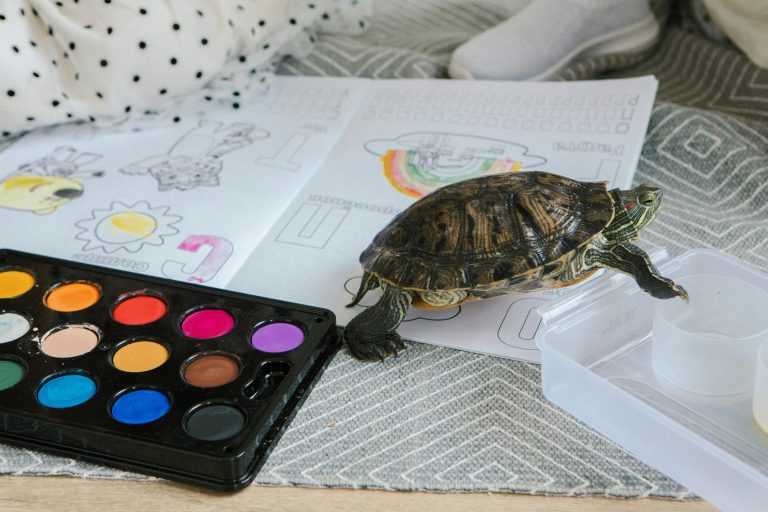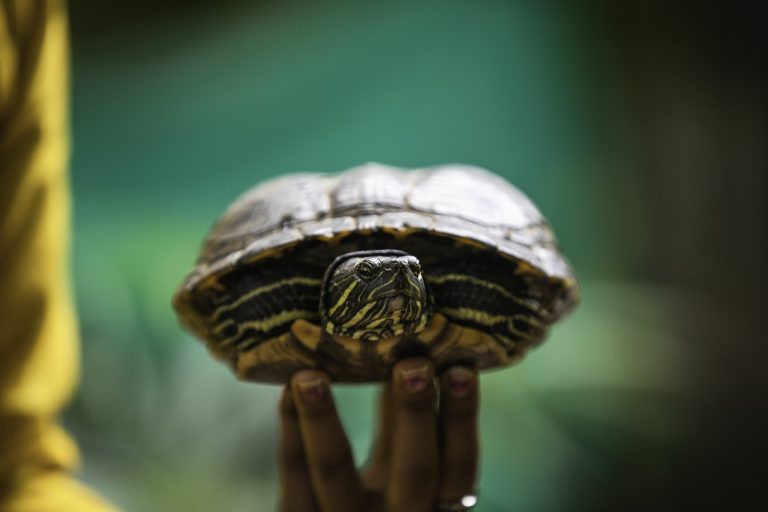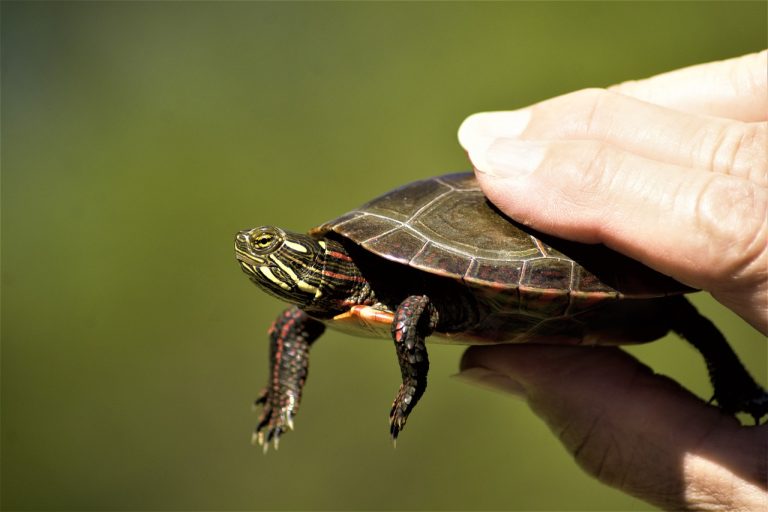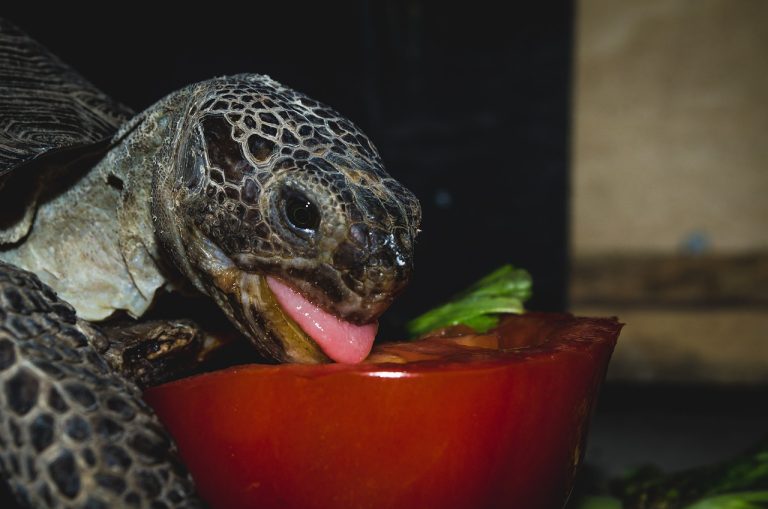Do Turtles Bully Each Other?
Every time I observe a turtle, I’m struck by its serene demeanor. Yet, despite their peaceful nature, turtles can display a range of behaviors, from friendliness to aggression, depending on various factors. This intriguing behavior often prompts the question: “Do turtles bully each other?”
Occasionally, turtles may exhibit bullying behavior, particularly in environments that are overcrowded or lack sufficient resources like food. Stress from such conditions can lead to conflicts among turtles, resulting in aggression and even biting.
If you’re curious about the fascinating behavior of turtles and want to learn more about what triggers anger in turtles and how to soothe your pet, I invite you to read further in this article. Here, I’ll delve into the factors that contribute to turtle aggression and offer tips on calming your turtle.
How Do Turtles Bully Each Other?
It’s important to distinguish between the terms “bullying” and “fighting” when discussing turtle behavior, as they represent different behaviors and dynamics within turtle interactions. Bullying in turtles involves one turtle consistently harassing or intimidating another. This behavior can manifest in various ways, such as incessantly following another turtle, fluttering its claws over the other’s head, pushing, or forcefully climbing on the other turtle’s carapace.
Typically, bullying behavior is more commonly observed among adult turtles, regardless of gender. Both male and female turtles may engage in this behavior, particularly in situations where dominance or territory is at stake. However, it’s worth noting that bullying behavior is less prevalent among baby and young turtles, as they may not yet have established dominance hierarchies or territorial instincts.
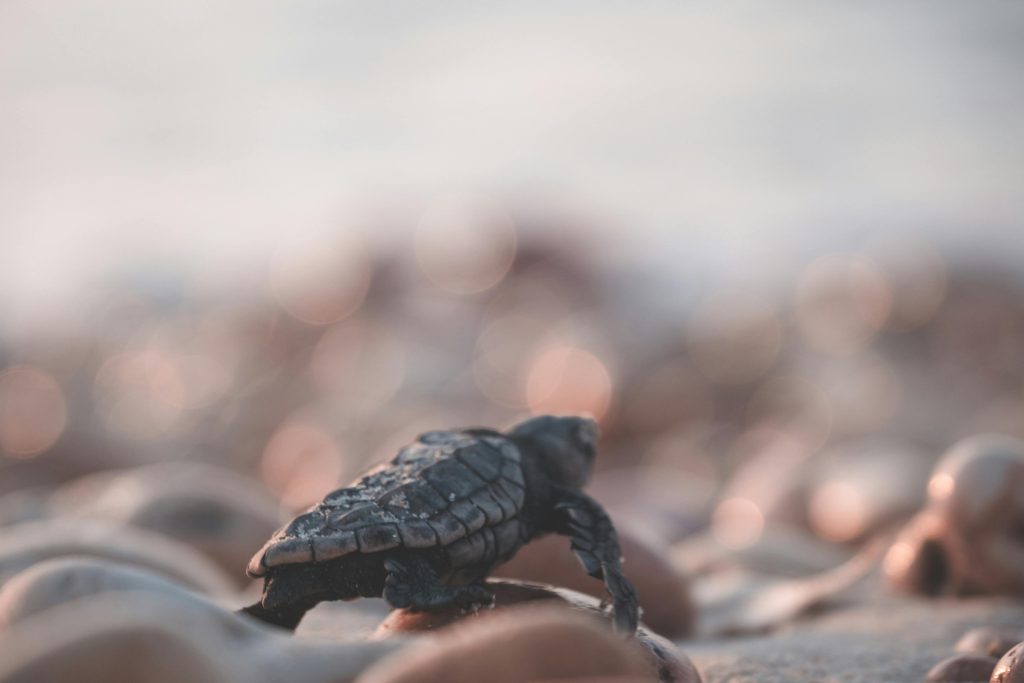
Why Do Turtles Bully Each Other?
Turtle bullying can stem from various underlying factors, although there is no single exact reason for this behavior. Professionals have identified several potential causes that may contribute to bullying among turtles:
- Mental Stress: Like humans, turtles can experience anxiety and stress, which may lead to bullying behavior. Factors such as discomfort in the enclosure environment or conflicts with tank mates can exacerbate stress levels and trigger bullying.
- Hunger: Competition for food resources can be a significant factor in turtle bullying. When turtles are not adequately fed or one turtle monopolizes food, hunger-induced stress can lead to aggressive behavior towards tank mates.
- Mating Behavior: During the mating season, male turtles may exhibit aggressive behavior towards females as part of their mating rituals. Persistent attempts to court a female turtle, such as swimming around her and nudging her head, can sometimes escalate into bullying behavior.
- Dominance: Dominance hierarchies may form among turtles, especially among adult males seeking to establish their authority within the group. Bullying may occur as a means for dominant turtles to assert their status over weaker or younger individuals.
- Incompatibility: Compatibility issues between turtles sharing an enclosure can also contribute to bullying behavior. Turtles with incompatible personalities or territorial instincts may clash, leading to bullying and potential fighting.
It’s essential for turtle owners to monitor their pets’ behavior closely and address any signs of bullying or aggression promptly. Providing a suitable environment, adequate nutrition, and ensuring compatibility among tank mates can help mitigate bullying behavior and promote harmonious cohabitation among turtles.
How To Stop Your Turtles From Bullying Each Other
While turtle bullying may not always be a severe issue, it’s essential to address it effectively to ensure the well-being of all turtles involved. Since the exact reasons for bullying behavior can be unclear, resolving the problem may pose challenges. However, many turtle owners have found the following tips to be effective in mitigating bullying among their pets:
- Ensure a Well-Decorated Enclosure: Create a stimulating and comfortable environment for your turtles by providing adequate hiding spots, basking areas, and substrate. Lack of enrichment in the enclosure can contribute to stress and potentially exacerbate bullying behavior.
- Provide Sufficient Food: Prevent hunger-induced stress by ensuring all turtles have access to enough food. Monitor feeding times and quantities to prevent competition for food resources among tank mates.
- House Males and Females Separately: If housing both male and female turtles, consider keeping them in separate enclosures to minimize mating-related conflicts and aggression.
- Separate Baby and Adult Turtles: To prevent dominance-related bullying, house baby and adult turtles in separate tanks. Adult turtles may inadvertently harm or intimidate smaller, younger turtles.
- Assess Compatibility and Separate Aggressive Turtles: If two turtles display incompatible behavior or engage in frequent aggression towards each other, consider separating them into different enclosures to prevent further conflict.
- Ensure Proper UV Lighting: UVA rays from UV bulbs can influence the mental state of turtles. Ensure that your UV lighting setup is functioning correctly to provide the necessary environmental cues and promote healthy behavior.
- Consider Breeding Decisions: During the mating season, bullying behavior may increase. If breeding is not desired, consider separating male and female turtles or implementing breeding procedures to manage mating-related conflicts.
By implementing these strategies and closely monitoring your turtles’ behavior, you can help create a harmonious living environment for your pets and reduce the occurrence of bullying behavior. Remember to prioritize the well-being and safety of all turtles under your care.
Do Turtles Bite Each Other?
Indeed, despite not having traditional teeth, turtles are capable of biting using their sharp, V-shaped beaks. These beaks can easily grasp onto objects, including other turtles, predators, or even human flesh. Victims of turtle bites often report experiencing significant pain due to the sharpness of the turtle’s beak.
While it’s not advisable to intentionally anger a turtle to experience its bite firsthand, it’s essential to recognize that turtle bites can be quite painful and potentially harmful. Therefore, it’s crucial to handle turtles with care and respect to avoid provoking aggressive behavior that may lead to biting incidents.
Why Do Turtles Bite Each Other?
There are several reasons why a turtle may resort to biting, whether directed at another turtle, a predator, or even a human. These reasons can vary widely and include:
- Territorial Disputes: Turtles require ample space to swim and bask comfortably. Crowded enclosures can lead to territorial disputes, prompting turtles to assert their space through aggression, including biting.
- Starvation: Turtles have a natural instinct to eat voraciously, especially if food availability is inconsistent. Competition for food resources within an enclosure can lead to hunger-induced stress and aggressive behavior, such as biting.
- Insecurity: Turtles may bite as a defense mechanism when they feel threatened or insecure. This can occur if they are mishandled or continuously provoked by humans or other animals.
- Mating: Mating rituals among turtles can be intense, with males often biting females as part of the courtship process. However, females may also bite males to resist mating attempts.
- Dominance: Adult turtles, particularly males, may assert dominance over weaker individuals through aggressive behaviors like biting. This behavior is aimed at establishing social hierarchy within a group of turtles.
- Mental Stress: Environmental factors such as inadequate space, dirty water, improper temperature, or disturbance from humans or other pets can induce stress in turtles. Biting may be a manifestation of this stress or anxiety.
- Incompatibility: If turtles housed together are incompatible due to differences in personality or territorial instincts, conflicts may arise, leading to biting and other aggressive behaviors.
Overall, understanding the underlying reasons for turtle biting behavior can help turtle owners create a more harmonious environment and minimize instances of aggression among their pets.

How To Stop Turtles From Biting Each Other?
It’s crucial for turtle owners to take proactive measures to prevent turtle biting incidents, as these can result in serious injuries and subsequent infections. Here are some strategies to help minimize the risk of turtle biting within an enclosure:
- Provide a Well-Decorated Enclosure: Ensure the enclosure is spacious and adequately decorated, with ample hiding spots and basking areas for all turtles. Maintain clean water and appropriate tank temperatures to promote a healthy environment.
- Monitor Feeding: Pay close attention during feeding times to ensure each turtle receives its fair share of food. Prevent food monopolization by monitoring feeding behavior and intervening if necessary.
- Use Visual Barriers: Install visual barriers within the enclosure to create separate spaces and allow weaker turtles to hide and protect themselves from potential aggression from dominant individuals.
- Separate Male and Female Turtles: If male and female turtles exhibit frequent fighting or aggressive mating behavior, consider housing them in separate enclosures to prevent conflicts.
- Separate Adult and Baby Turtles: Avoid housing adult and baby turtles together to prevent dominance-related aggression towards younger turtles. Provide separate enclosures to allow each group to thrive without competition.
- Address Mating Behavior: If mating attempts result in aggression or biting, separate male and female turtles to prevent further conflict. Monitor their behavior closely to ensure their safety.
- Create a Quiet Environment: Place the turtle tank in a quiet area to minimize stress and disturbances from children or guests. This will help maintain a calm and peaceful atmosphere for the turtles.
- Handle Turtles Properly: When handling turtles, ensure gentle and proper handling techniques to avoid causing stress or injury. Avoid touching sensitive areas or provoking aggressive behavior.
- Consider Separate Enclosures: If two turtles consistently fail to get along despite efforts to mitigate aggression, consider housing them in separate enclosures to prevent further conflict and ensure their well-being.
By implementing these measures, turtle owners can create a safe and harmonious environment for their pets, reducing the risk of biting incidents and promoting the overall health and well-being of their turtles.
Do Turtles Fight With Each Other?
Certainly, imagining a pet turtle fight can be quite intriguing, albeit not a common occurrence in captivity. When turtles engage in fights, their aggression manifests through various behaviors such as nipping, biting, pushing, or even hitting each other’s shells. These confrontations can arise due to territorial disputes, dominance struggles, or other factors leading to stress or aggression.
Unlike the gentle interactions seen during mating rituals, fights among turtles tend to involve more intense and aggressive behavior. This may include repeated biting or nipping with greater force as the turtles vie for dominance or defend their territory.
It’s essential for turtle owners to be aware of the potential for aggression among their pets and take steps to minimize conflicts within the enclosure. Providing ample space, appropriate hiding spots, and carefully monitoring interactions between turtles can help prevent fights and promote a harmonious living environment for these fascinating reptiles.
Why Do Turtles Fight?
Understanding the reasons behind turtle fights can shed light on their behavior and help turtle owners create a more harmonious living environment for their pets. Here are some common factors that may trigger turtle fights:
- Space: Turtles require ample room to swim and bask comfortably. Overcrowded tanks can lead to territorial disputes as turtles vie for space, particularly on basking docks where they need to regulate their body temperature.
- Mating: During the mating season, male turtles may exhibit aggressive behaviors such as nipping or pursuing female turtles to initiate courtship. However, females may resist unwanted advances, leading to confrontations and fights.
- Food: Turtles are voracious eaters, and competition for food resources within an enclosure can lead to conflicts. Dominant turtles may assert control over feeding areas, causing disputes with other tank mates.
- Water Quality: Poor water quality can negatively impact a turtle’s health and behavior, leading to irritability and stress. Turtles may become more prone to aggression if they are experiencing discomfort or illness due to suboptimal water conditions.
- Dominance and Power Display: Like many animals, turtles may engage in fights to establish dominance within a group or assert their strength over rivals. This can occur between individuals of the same species or different species housed together.
- Mismatched Tank Mates: Housing different turtle species together can increase the likelihood of conflicts, as each species may have different temperaments and aggression levels. Mismatched tank mates may not tolerate each other well, leading to fighting and stress.
By addressing these factors and providing a suitable environment with adequate space, proper feeding practices, and compatible tank mates, turtle owners can help minimize the risk of fights and promote the well-being of their pets.
How To Stop The Turtles Fight?
To minimize fighting among turtles and promote a peaceful coexistence in the tank, consider implementing the following strategies:
- Separate Enclosures: If feasible, house turtles in separate enclosures to prevent territorial disputes and aggression.
- Large Tank: Provide a spacious tank to accommodate multiple turtles, ensuring each has ample room for swimming and movement.
- Spacious Basking Dock: Install a large basking dock equipped with multiple UV lamps to accommodate all turtles comfortably and ensure they receive adequate exposure to UV rays.
- Water Filtration: Maintain optimal water quality by using a reliable water filter and regularly monitoring pH and chlorine levels to keep turtles healthy and content.
- Balanced Diet: Offer turtles a balanced and sufficient diet to prevent conflicts over food. If necessary, separate turtles during feeding time to avoid disputes.
- Visual Barriers: Introduce vegetation, rocks of various sizes, or commercial visual barriers to the tank to provide hiding spots and protect weaker turtles from aggression.
- Separate Male and Female Turtles: Avoid housing male and female turtles together, especially during mating season, to prevent dominance and aggression.
- Avoid Multiple Male Turtles: Limit the number of male turtles in a single enclosure to reduce competition and aggression among dominant males.
- Consider Age and Sex: When housing turtles together, consider their age and sex to minimize conflicts. Avoid mixing adult and juvenile turtles, as well as aggressive male turtles with more docile companions.
- Compatibility Testing: Experiment with different pairings to find compatible tank mates for your turtles, allowing them to coexist peacefully without frequent conflicts.
By implementing these measures, you can create a harmonious environment for your turtles and reduce the likelihood of fighting, promoting their overall well-being and happiness.
What Happens To The Turtle During A Fight?
Fighting among turtles can lead to injuries ranging from scratches and scrapes to more serious wounds. When two strong turtles engage in a fight, the consequences can be particularly severe, potentially resulting in deep wounds or even death.
If you witness turtles fighting, it’s crucial to intervene promptly to prevent further harm. Separate the turtles involved in the altercation and provide them with space to calm down. Leaving the agitated turtle alone for a period can help reduce stress and agitation.
Additionally, closely monitor the injured turtle for signs of distress or worsening condition. Seek veterinary attention if necessary to address any injuries and ensure proper care and treatment for the affected turtle.
Ultimately, swift action and attentive care are essential to minimize the risk of serious injury or fatalities resulting from turtle fights.
Final Words
Certainly, turtles are capable of exhibiting bullying, biting, and even fighting behaviors. Despite their typically gentle demeanor, these seemingly harmless and slow-moving creatures can become forceful under certain circumstances. As a responsible owner, it’s important to be aware of the potential for aggression in turtles. This awareness enables you to promptly recognize and address aggressive behavior, ensuring the well-being of your pets.
